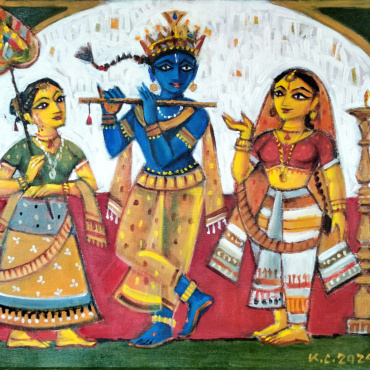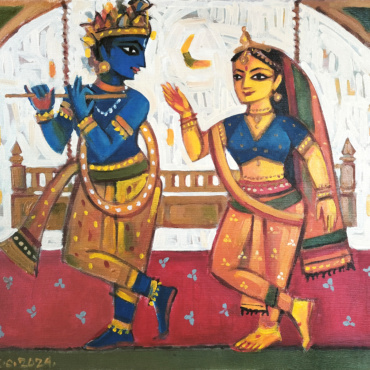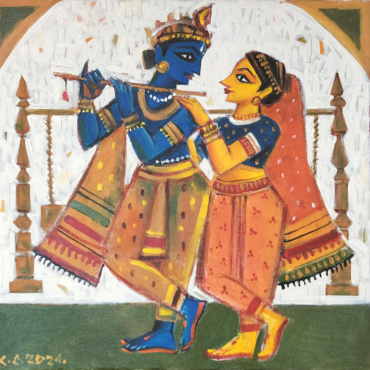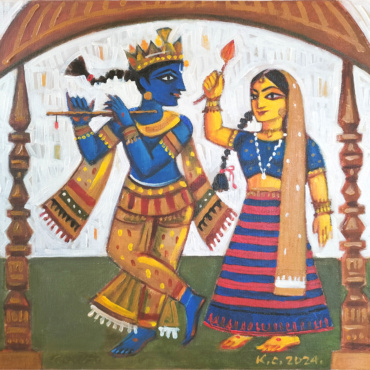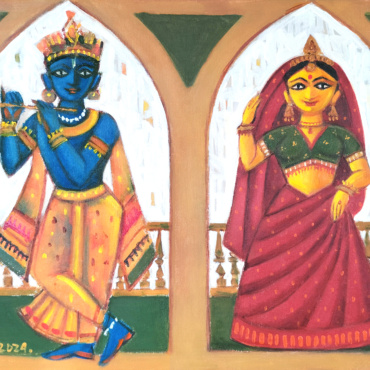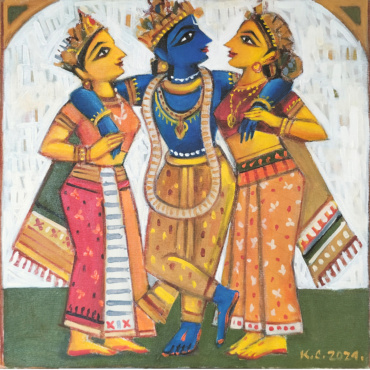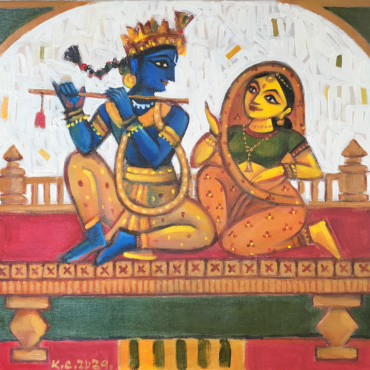The call
The world today is in the throes of a deadly sickness. The outburst of violence within and without, in our homeland, in friendly countries, streaming through the world, marks a time that resonates in Tagore’s song: ‘Listen, O father, to a commonality wailing in agony, O listen!’ This is the setting for the exhibition, ‘The Call’, a suite of paintings by Krishnendu Chaki, presented by Debovasha.
The Call? Who is it that calls? Whom does it address? Why is it sent across? In a time devoid of love, it is a heartrending call for love, a paean bursting out of Brindaban, as Radha cries out, ‘Let me rush to the one who plays on the flute tugging at my heart! ‘
Though this scenario of love revolves around Radha and Krishna, and the artist has chosen the canvas for his surface, what do the paintings offer us? What do we expect from paintings? A major modern painter, and the greatest poet in the Bengali language, has left an answer to that question: ‘We want to see. We love to see. It’s that craving that charges creativity which in its turn throws up a host of visuals that carry no burden of thought, no concern with the daily needs of living, no question of right or wrong. All that they offer is the assertion–‘I certainly exist’. With that assertion they seem to reaffirm their existence anew. When you ask–What is a picture? –The answer is: it is a witness to a firm, immediate existence.’
The series of paintings on display here carry the same message, transcending the confines of their theme. ‘The Call’ then is not a call from a lover to his beloved, but, transcending its obvious theme, it registers yet another call, the painting itself calling out, ‘I exist’, a call sent forth by an ‘immediate existence.’
In his present body of works, Krishnendu Chaki delves deep into his lifetime’s seeing and feeling, to come up with their essence. The viewer will be disappointed if he seeks to hedge them into any particular element, tendency or style; for the truth that the artist offers is the presence of the connexions between the grace and conventions inherent in our traditional folk arts and terracotta temple sculptures and a modern sensibility. The radiance of this connexion permeates his works even as they proclaim their emanation, carried forth by the strains of the flute.
One last suggestion. To perceive, read or pursue an artistic journey, one needs to follow a course. In his journey, Chaki has explored the Radha-Krishna scenario twice earlier, once on paper, and then again on silk. In both his earlier explorations, he seemed to have been engaged in weaving an arbour for the artist and his art. Now the arbour seems to be in place, and time for both to share and revel in the space.


